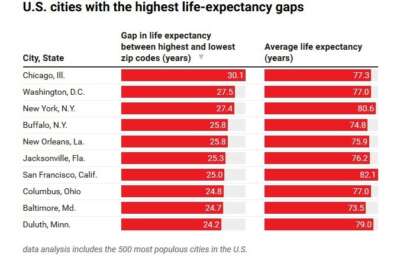
You can’t take it with you — or can you?
One of the great fears of people planning for retirement is running out of, or low on money while they are still breathing.
One of the great fears of people planning for retirement is running out of, or low on money while they are still breathing. It’s possible that many of you reading this could be retired for as long as you worked.
And life will go on. But without a steady paycheck, with occasional pay raises, coming in every two weeks. Gulp!
Running out of money isn’t a major problem for most federal-postal workers. They will get a pension for life — Civil Service Retirement System or Federal Employees Retirement System. The majority will have Social Security fully indexed to the cost of living and Thrift Savings Plan accounts. CSRS retirees, for now, get full COLAs each January. FERS retirees are under a diet-COLA system which, over time, will reduce their spendable income. Those with most or all of their money in the G fund will likely see it fall behind inflation over time.
That was the subject of Wednesday’s Your Turn radio show with Washington, D.C., area financial planner Arthur Stein. The accompanying column showed how it is possible, likely for many, that they will run short of money in retirement. He said that while feds are better off in retirement than most people, but that they could be running on near empty after years in retirement. That’s because their diet-COLA FERS pensions won’t keep up with inflation if it exceeds 2% per year. Or if they have too much of their TSP invested in the G fund. To listen to that show, click here.
Meantime, here’s an email from a long-time fed who has done his homework based on the assumption that he could live until age 90:
“In response to your column, I have worked out my cash flow through about age 90. I am currently 72. The largest part of my expenditures is my mortgage. I was lucky and refinanced down to 3.16% when the rates worked their way down. But my mortgage is only about 25% of my total expenses. So, I only need to worry about the property tax part of the total (Fairfax County, Virginia) and that increase due to inflation. I expect and figured that the COLAs would be roughly equal to inflation.
“As I get older, I expect to be able to reduce my monthly TSP withdrawals from my current level to make-up the difference between CSRS and my total cash needs. At about 2% annual increase to CSRS, my total CSRS will equal my current CSRS plus TSP in about nine years. I expect my TSP will last until I am about 92 or longer.
“I am lucky; in my last job, I did financial analysis and projections so I feel comfortable with doing my own analysis and projections. I recommend that everyone educate themselves on learning financial projections. Excel and other tools exist. Start with an investment of $100 – earning 5% and what the future value of that investment is after five years: FV = PV at 5% N=5. Not hard. Then figure out an annual payout over five years. Play with the numbers.
“Oh well, I am into the weeds. But it is either that or pay someone big bucks. Thanks for the good advice and heads up. People really need it.” — RMD
Nearly Useless Factoid
By Amelia Brust
In 1893, in Auckland, New Zealand, Richard Henry became obsessed with the flightless, moss-colored parrots called kākāpōs which are indigenous to the country. The introduction of mustelids, such as ferrets and stoats, led to kākāpōs’ decline almost to the point of extinction. Several months later, he became caretaker of the uninhabited Resolution Island, and spent 14 years rowing hundreds of the birds from the mainland to the island to create a sanctuary. This year the country hopes to restart Henry’s kākāpōs breeding program on the island.
Source: Atlas Obscura
Copyright © 2024 Federal News Network. All rights reserved. This website is not intended for users located within the European Economic Area.
Mike Causey is senior correspondent for Federal News Network and writes his daily Federal Report column on federal employees’ pay, benefits and retirement.
Follow @mcauseyWFED
Related Stories

January retirement tidal wave: Beginning of the end — or end of the beginning?




